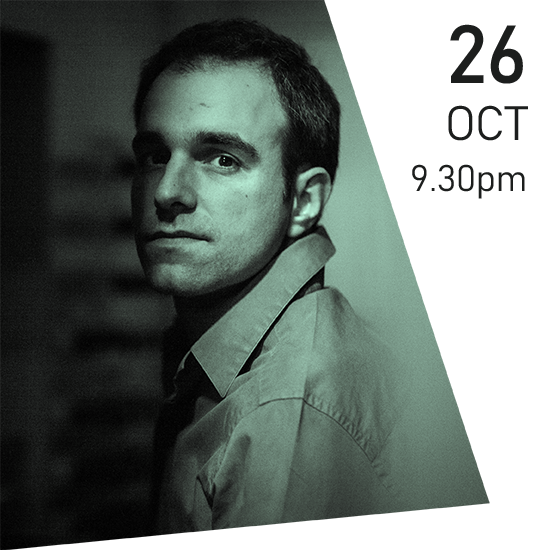 October 26, Saturday, 9.30 pm
October 26, Saturday, 9.30 pm
Igreja de Nossa Senhora da Conceição, Machico
Juan de la Rubia, organ
This concert, focused on Renaissance and Baroque music, seeks to be a tribute to one of the most important historical sources from the sixteenth century in the Iberian Peninsula: the Libro de cifra nueva by Venegas de Henestrosa. The programme presents works by great authors from the rich Iberian organ tradition, in combination with improvisation, which was a common practice at the time and which on this occasion is shown in stylistic contrast with the repertoire.
Antonio de Cabezón is an undisputed reference in Spanish Renaissance music and, as such, is present in Venegas de Henestrosa’s book. Blind since childhood, Cabezón managed to develop a contrapuntal writing style that influenced great European composers of the time. Lux beata trinitas is a brief liturgical hymn that evokes the feast of the Holy Trinity.
Next comes Francisco Fernández Palero, a lesser-known but equally significant figure who was highly valued by Venegas. His works Super Philomena and Veni, redemptor, quaesumus demonstrate his ability to elaborate complex counterpoints, glosas and diferencias on preexisting melodies – a common practice at the time, which emphasized the dexterity of both the composer and the performer. Fernández Palero, who was also a chapel master, composed music filled with spiritual depth and rich in harmonic colour.
The first improvised interlude presents an essential element of organistic art: improvisation. This practice, which in the times of Cabezón and Palero was an indispensable skill for any organist, remained alive throughout the centuries. Improvisation not only allows the performer’s creativity and technical mastery to be demonstrated, but also connects the listener with the living tradition of the instrument, with the three interludes of this concert creating a stylistic contrast with the repertoire.
Francisco de Soto’s Tiento shows us a musical form that combines elements of fantasy and ricercar. De Soto, like many of his contemporaries, used this form to explore the expressive possibilities of the organ. Sacris solemnis, Joseph vir by Cristóbal de Morales, on the contrary, is an organ adaptation of a vocal work: a hymn dedicated to Saint Joseph. Morales, known mainly for his sacred vocal music, was one of the great masters of the Renaissance and his organ music, although less extensive, shares the same emotional depth as his vocal compositions.
In addition to the music compiled by Venegas de Henestrosa, Diferencias sobre la gallarda milanesa by Cabezón show us a form of variation that allows the performer to explore different textures and rhythms on a given theme. Pablo Bruna, for his part, demonstrates a mastery of counterpoint and technical complexity in the two works of this concert that contrast with each other: the Tiento de mano derecha y al medio de dos tiples and the Tiento de falsas, a work designed to emphasize the dissonances through suspensions and appoggiaturas.
The concert concludes with an anonymous suite of dances from the eighteenth century, which includes popular pieces such as the Danza del hacha and the Canarios. These dances, although simple in structure, are rich in rhythm and vitality, reflecting the popular spirit of the time.
Finally, the final improvisation provides an open ending, where the organist can integrate elements from everything heard, fusing tradition and creativity in a final tribute to the historic organ that, with its unique voice, was the true protagonist of the concert.
— JUAN DE LA RUBIA —
Programme
Antonio de Cabezón (1510-1566)
¬ O lux beata trinitas
Francisco Fernández Palero (?-1597)
¬ Super Philomena
¬ Veni, redemptor, quaesumus
Juan de la Rubia (1982)
¬ Improvised interlude I
Francisco de Soto (1517-1583)
¬ Tiento
Cristóbal de Morales (1500-1553)
¬ Sacris solemniis, Joseph vir
Antonio de Cabezón
¬ Salve Regina
Juan de la Rubia
¬ Improvised interlude II
Antonio de Cabezón
¬ Diferencias sobre la gallarda milanesa
Pablo Bruna (1611-1679)
¬ Tiento de mano derecha y al medio de dos tiples
¬ Tiento de falsas de segundo tono
Juan de la Rubia
¬ Improvised interlude III
Anónimo (España, siglo XVIII)
¬ Suite de danzas
› Matassine
› Marizápalos
› Canarios
› Danza del hacha
Juan de la Rubia
¬ Final improvisation
